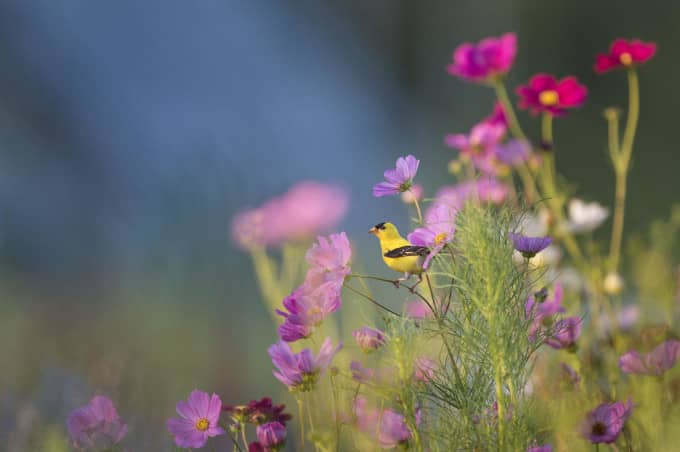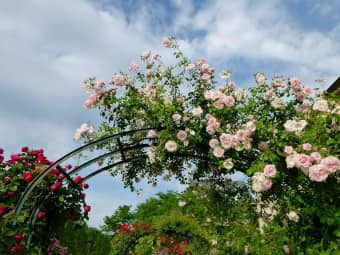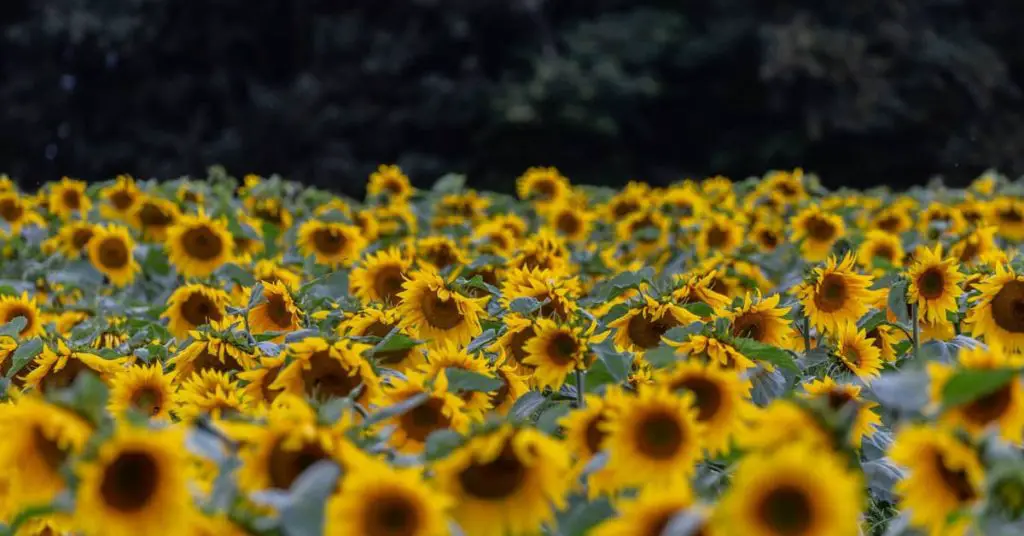Hah, the outdoor plants indeed are simply beautiful and the outdoor life is breathtakingly amazing, not just for the busy moms but for the entire family. The Art For Planting Outdoor Plants comes in the many artful anti-stressful designs. From the wondrous huge designs of the gardens in your own house or in the fields, parks and in the vast wildlife.

The vines look good for your gardens and the bougainvilleas of varying colors of its flowers and leaves, the red and pink roses on the ground, the orchids on trees and a lot more. The daisies (Bellis petennis) plants of magical colors look amazing too in the outdoors. The daisy symbolizes a love, purity, innocence, motherhood and wonderful new beginnings.
The art of gardening for outdoor plants is truly a fun and relaxing pastime or hobby that produces everything you can or need: from the fresh veggies, delicious herbs, scrumptious foods, fragrant flowers, plants for cleaning your kitchen sink and tiles like lemon and or calamansi, improves the intake of nutrients for young and adult alike, ornamental plants to medicinal plants.
Are you planning to plant outdoor plants to beautify your garden and backyard? Are you also planning for some indoor plants as well to add some zest to your living room and balcony? I encourage you to do so and still be friendly with your pockets.
You can economize well simply by budgeting before going to buy plants for your home. List down the plants that you want to buy. By purchasing plants within your budget, you can avoid breaking the bank. Plants need not be highly expensive to beautify your homes.
Focus more on what you want, what you need for your garden and to beautify your garden a bit within your budget.
In relation to your 10 Art of Planting for Outdoor Plants, in the next section, I list the twelve (12) plants that love being exposed to the sun.
12 Sun-Loving Outdoor Plants
- The Oblong-leaved Croton (Croton oblongifolius) which was adopted from Greek word “krotos” that means ‘tick’ and said to cure rheumatism (for external use) and some use it for oil.
- The Monstera (Monstera deliciosa) or the common name “Swiss cheese plant” native entirely to the tropical forests of southern Mexico, south Panama, Hawaii, Seychelles, Ascensión Islands, Asia, and the Philippines.
- The Jungle Geranium or Santan (Ixora coccinra Linn.), a flowering shrub in tropical regions like southern America and Florida, South Asia, Philippines, Africa, Southern India and the other warm climates as well. In the ancient times and even more to date, many people believe that the leaves of Ixora cure wounds, hiccups, nausea, sore throat, mild cough, and asthma. To top it all, it has its own chemo protective effects. Further, the collagen content in its flower cures the hypertension for men and women, and the irregular menstruation for the ladies.
- The Aloe Vera a succulent plant (Aloe barbadensis Miller), originates from the Arabian Peninsula but also grows on tropical countries around the world. The Arabic word “aloeh” means ‘shining bitter substance’, whilst the Latin word “vera” means ‘true.’ The Egyptians called it the “Plant of Immortality” thus resulting to the many store-bought products production from the Aloe vera plant, i.e., the rise of bath soaps, handwash, lotions, shampoo, conditioner, salon hair treatments and many other beauty products. The Dermatology Clinics of today use Aloe vera extract too. It is a therapeutic remedy used often for a beautiful skin, beautiful hair, burned skin, dandruff, pimples, etc. The family comprises almost 250 varieties of aloe vera that you can find.
- The Cactus (Cactaeae), the succulent plants, amazingly adapt to the tropical environments. The Cactus plants are said to treat a person with diabetes, high cholesterol, obesity, colitis (intestine), benign prostate hypertrophy (BPH) with problems in weak urine flow, frequent urination day or nights, pain during urinating, bladder infections, lower back pain. Please see a doctor if you have any of these symptoms in prostate and colitis or intestine concerns. Water therapy and intake of healthy fruits and veggies is necessary. The raw cactus fruit called also called as the “prickly pears” because of it tastes sweet and its pear shape like—can be eaten freshly picked from the plant in Mexico and other countries. But it has a major problem though as the fruit the ‘prickly pears’ can cause either diarrhea, headache and nausea, which blooms during the peak season in summer.
- The many varieties of Bromeliad (bromeliaceae), has 3,590 known species native mainly to the tropical Americas, West Africa and the Philippines. The pineapple fruit belongs to the bromeliad family. It is the only edible amongst the bromeliad lineage at the outdoors.
- The Brazilian Kalachuchi (Plumeria acuminata), are used as ornamental plants and also as fresh floral necklaces or garland for accessories to visitors in the many high end resorts and beaches. The flower comes in yellow or white colors.
- The Jasmine (Jasminum sambac). The Arabian Jasmine stands out because of its many petaled flowers, which are famous for jasmine tea in the market for ages and ages. This grows in Arab countries, India, Southeast Asia and the Philippines, which can be planted as a shrub or a vine and serves as the great pollinators around the garden, farms and the forests.
- Male Chicken’s Comb (Celosia cristata), grows in Africa, Asia, Japan, and the Philippines. It is named so because the shape of the ears of its flowers resembles that of a chicken’s crown. The leaves are used for some stew or hot soup. It has a very soft texture and a mild like delicious spinach-like taste at the same time.
- The Sunflower (Helianthus annuus), which is a native to North America, Central America, South America, Asia, and the Philippines. A perennial flowering plant which was derived from the greek word “helios” that means ‘sun’, and the “anthus” means ‘flower.’ The seeds are being used as a snack option. Munching it helps for weight loss too, along with your healthy diet of water therapy, fresh veggies and fruits.
- Some kinds of Orchids (Orchidaceae). These plants are used in perfumes, aromatherapy, bath soaps, handwash, lotions, shampoo, hair conditioner and serves as great ornamental plants. It grows in some parts of America, Florida, Hawaii, some parts of Europe, Singapore, London, Guatemala, Costa Rica, Honduras, New Zealand, Asia, Thailand, Malaysia, Israel, Oman and the Philippines. Some saprophytic orchid species produce potato-like tubers and were consumed as food by some people in Australia.
- The Bougainvilleas (Bougainvillea spectabilis) truly love the sun. It grows in the tropical locations like the Eastern South America, west to Peru, Brazil, Arge Asia, Middle East, Asia, Brunei, Thailand, Singapore, Vietnam, Indonesia and the Philippines. It can also extraordinarily grow in Japan, which is highly prominent for their fab beautiful landscape of gardens, their chic Japanese bonsai bougainvilleas, and their deliciously prepared Japanese vegan cuisines.
When you wholly love the flowers and plants, the trees and nature only then will you fully get to appreciate the wild animals that depend on the wildlife for its basic needs for food and shelter, and the part of a balance in an ecosystem on human beings too. Thus, you get to appreciate the 10 art of planting for the great outdoors.
The 10 Art of Planting for Outdoor Plants

- The leafy veggies like lettuce or pechay, mustard leaves, celery, parsley, basil, tomatoes, spinach or alugbati, lady finger (okra), red bell pepper, eggplants, ginger, potato, kamote tops, jalapeno, chili grows quickly when you first plant it on small flower pots or containers, rather than planting it directly on your beautiful garden. You can transfer it then to a much bigger flower pot or to your garden, greenhouse, backyard or farm when you see it has enough leaves and stable trunks. Put low-growing plants on the front rows to accentuate the shapes and help draw attention to taller plants at the back.
- The ponkan, oranges, strawberries, grapes, lemon, dragon fruit, papaya, mangoes, mangosteen, rambutan, marang, durian, lanzones, apple, guava, guyabano, avocado, duhat grows best when being planted first on a pot or small containers. It grows quickly in just a matter of 2 to 3weeks. After three (3) to four (4) months, you can transfer it to your garden or backyard, farm or to the forest.
- It is best to always plant the seeds itself rather than having the off-the-rack and store-bought seedlings in sachets. After slicing your store bought fresh tomatoes, apple, red bell pepper, cucumber, jalapeno for your brunch or lunch, vegan salad—remove all the seeds and plant it on small flower pots. It grows quicker and is friendly to your pockets, too. If the seeds are good, you can see results in just seven (7) days to fifteen (15) days.
- Planting outdoor plants on a small container or potting is quite essential to your planting procedure. This is so to control as much the water you are giving your plants—not too little, but not too much either.
- Purchase flower pots that go with a small plate on the bottom. Or you may opt to put below your pots any of your excess plastic plates from your kitchen. As this plates ensures even if they are not being watered on a day-to-day basis, your plants can still have water below the pots—the water that goes on the plates helps ensures your plants will still have enough moisture of water on it.
- When planting your outdoor plants, ensure that you always stick within a very short distance to the hydrogen water to ensure it has enough liquid it needs. Simply put—stay closer enough to the water or faucet in your garden or creeks at the farm to make it grow healthier and fast.
- Pursue planting your outdoor plants along the sunny path. You need to follow the sun where it rises the most of the day in your beautiful garden.
- A small space gardening and or a small space greenhouse are always highly ideal for maintenance; rather than having extensive acres of land for planting where you can be more stress just taking care of it on a day-to-day basis. Because it will surely eat your time and energy every day and you can’t focus on the more immediate matters anymore.
- Always have natural fertilizer for your outdoor plants and flowers for a sustainable gardening and planting.
- Put some zest in your beautiful garden with the art of planting for your outdoor plants. Level up and add some raised gardens (raised soil) for herbs, or on your terrace or rooftop garden, or a stone wall garden tiers, or a garden gazebo, or a wheelbarrow planter ideas, or a rock border, or a much needed simple stone path, or a mini garden Japanese pond with a bridge, and even a simple garden bench as well. Add more colors with it, like having flowers to give it a more relaxing ambiance and good vibes not just for your kids and teens, but also for the adults as well. Kindly refer to my three (3) other related articles on:
- Effective Natural Fertilizer Plantae: 5 Easy Steps. 2022
- 13 Essential Psychological Elements on Raising Temperamental Kids. 2021
Additional Tips on Planting Outdoor Plants

- Make your own budget friendly garden trellis for climbing plants and beautify your garden. Also, you may put varied tiny plants in a wheelbarrow which adds elegance on your garden.
- A full garden is a happy garden. You can add some of the palm trees, pine trees, the fruit trees and some of the flower plants in your garden. Bring on the butterflies and the chirping birds in your garden, then sit quietly with your kids to enjoy a bit of life’s simple, amazing happiness with them. Whilst fruit-bearing trees attract birds of all kinds—the summer blooming flowers, lantana, dahlias, magnets the butterfly to your garden. Many studies have shown that gardening and planting reduces stress and anxiety from overfatigue, overwork, meetings, deadlines to meet, household chores, kids etc. Gardening or Formal Horticultural therapy can increase overall levels in fitness activity, burn calories, weight management, increase healthy veggies consumption for elders, improves the much needed nutrition of and healing for your family, and improves the attitude of the young people to healthy eating. This gardening treats your temperamental kids, minor asthma, allergens, allergies, intensive cancer treatment, hypertension, heart ailments, etc.
- Mix one (1) aspirin in a jar full of water, and then water it on your plants—eggplants and tomato plants because they are both vulnerable to fungi and other bacteria that cause worms to live on them. But aspirin keeps them at bay and makes your tomatoes healthy. You can also mix aspirin in a jar of water and then place your fresh bouquet, which will last for five (5) days to one (1) week—we do this all the time and it works wonders for the flowers.
Related Helpful Biblical Verses on Planting
For there will be peace for the seed: the vine will yield its fruit, the land will yield its produce and the heavens will give their dew; and I will cause the remnant of this people to inherit all these things.
Zechariah 8:12
I planted, Apollos watered, but God was causing the growth. So then neither the one who plants nor the one who waters is anything, but God causes the growth. Matthew 13: 37. And He said, “The one who sows the good seed is the Son of Man.”
1 Corinthians 3:6-7
“I am the vine; you are the branches. If a man remains in Me and I in him, he will bear much fruit; apart from Me, you can do nothing.”
John 15:5
When we plant, it needs literal water and similarly we human beings as teeny weeny Lilliput dot on a gigantic earth are nothing without God. That’s why we need Jesus as LORD. Jesus is our Living Water. Understanding this significant concept from the Holy Bible helps believers and nonbelievers alike that in order for us to bear fruit which brings glory to God the Father, we must be rooted and or connected to our LORD Jesus. Jesus is the vine, we His people are the branches.
Jesus said, ” And you shall know the Truth, and the Truth shall make you free.”
John 8:32
He was talking about Himself in this statement. When we come to know the LORD Jesus (the Truth), we will find freedom. Lord Jesus sets us free by dying on the cross! He knows your name even when you’re still inside the womb of your mother—now how amazing can that be! How amazing that Jesus loves you and is waiting for you to simply humbly come near Him and that’s it.
References
Clatworthy, J., Hinds, J., & Camic, P. M. (2013). Gardening as a mental health intervention: a review. Mental Health Review Journal.
Garrett, H. (1998). Texas Organic Vegetable Gardening: The Total Guide to Growing Vegetables, Fruits, Herbs, and Other Edible Plants the Natural Way. Taylor Trade Publishing.
Peter (2020). Gardening Calendar 2020: What To Plant Now?. (2020). Retrieved 4 May 2022, from https://www.gardeningstuffs.com/what-to-plant-now/
Schmutz, U., Turner, M. L., Williams, S., Devereaux, M., & Davies, G. (2014). The benefits of gardening and food growing for health and wellbeing.
Wakefield, S., Yeudall, F., Taron, C., Reynolds, J., & Skinner, A. (2007). Growing urban health: community gardening in South-East Toronto. Health promotion international, 22(2), 92-101.



